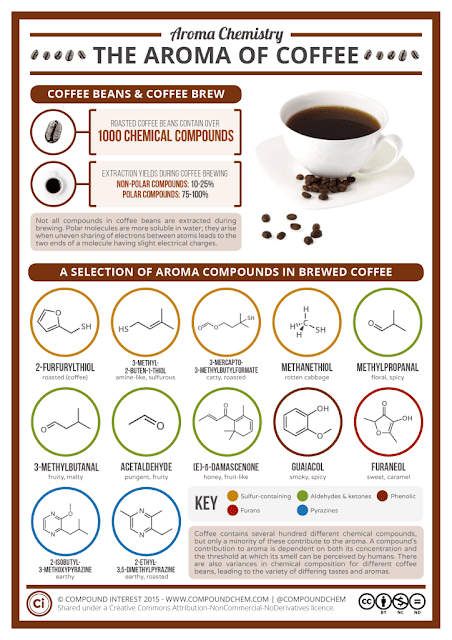We eat them, we carve them, but do we really know what’s
behind them? Here, we look at the chemistry of pumpkins.
 |
| Source: http://cen.acs.org/articles/93/i40/Periodic-Graphics-Chemistry-Pumpkins.html |
Pumpkins are grown all around the world for a variety of
reasons ranging from agricultural purposes (such as animal feed) to commercial
and ornamental sales. Of the seven continents, only Antarctica is unable to
produce pumpkins; the biggest international producers of pumpkins include the
United States, Canada, Mexico, India, and China. The traditional American
pumpkin used for jack-o-lanterns is the Connecticut Field variety.
As one of the most popular crops in the United States, 1.5
billion pounds (680,000,000 kilograms or 680,000 tonnes) of pumpkins are
produced each year. The top pumpkin-producing states include Illinois, Indiana,
Ohio, Pennsylvania, and California.
Pumpkins are a warm-weather crop that is usually planted in
early July. The specific conditions necessary for growing pumpkins require that
soil temperatures three inches (7.6 cm) deep are at least 60 °F (15.5 °C) and
soil that holds water well. Pumpkin crops may suffer if there is a lack of water
or because of cold temperatures (in this case, below 65 °F (18.3 °C); frost can
be detrimental), and sandy soil with poor water retention or poorly drained
soils that become waterlogged after heavy rain. Pumpkins are, however, rather
hardy, and even if many leaves and portions of the vine are removed or damaged,
the plant can very quickly re-grow secondary vines to replace what was removed.
Pumpkins produce both a male and female flower; honeybees
play a significant role in fertilization. Pumpkins have historically been
pollinated by the native squash bee Peponapis pruinosa, but this bee has
declined, probably at least in part to pesticide sensitivity, and today most
commercial plantings are pollinated by honeybees. One hive per acre (4,000 m²
per hive) is recommended by the U.S. Department of Agriculture. If there are
inadequate bees for pollination, gardeners often have to hand pollinate.
Inadequately pollinated pumpkins usually start growing but abort before full
development.
"Giant pumpkins" are a large squash (within the
group of common squash Cucurbita maxima) that can exceed 1 ton (2,000 pounds)
in weight. The variety arose from the large squash of Chile after 1500 A.D
through the efforts of botanical societies and enthusiast farmers.
Such germplasm is commercially provocative, and in 1986 the
United States extended protection for the giant squash. This protection was
limited to small specimens of a very specific parameters, being a weight of 175
pounds, oblong shape, etc. In 2004, the restriction expired except for the
requirement of indefinite use of the pseudonym "Dill's Atlantic
Giant" for squash fitting the specific parameters or the seeds thereof.
For more information visit:-



